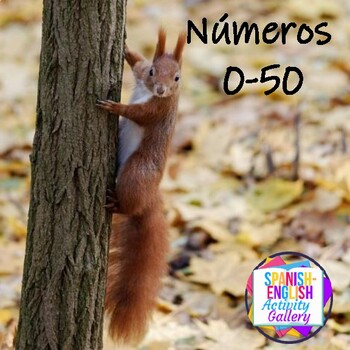
One of the concepts to learn next in Spanish is numbers.
The easiest way to start is to have students repeat the numbers after you.....uno, dos, tres, cuatro, cinco, seis, siete, ocho, nueve, diez.
Something fun to do is have one student say uno, another student says dos, the next one says tres and so on. The students have to be alert and ready to say whatever number is next.
Have students stand in a line, but have them change the order so that they can practice saying all numbers that they need to practice that day or class meeting.
Another way to practice is for the teacher to say a number in English and the students can say the equivalent number in Spanish. The teacher can also use a soft ball to throw at a student. She/he can say the number in English and the student can say the same number in Spanish.
It's also a good idea to have a number line with large numbers. Use a yard stick and point to different numbers, and the students can call out the correct number in Spanish.
Students can also recite the numbers in order individually in front of the class or whisper it to their teacher so that teacher can assess mastery.
This lesson has several of the necessary handouts to help students learn the numbers in Spanish.

Students love the Spanish alphabet because it helps them learn the language more quickly. How do you hook students into learning the Spanish alphabet? Use the following tips to begin and end your class on a positive note every single day. Let students work on the Spanish Alphabet Dictionary during the middle of class.
Tip # 1: Make sure that you have the alphabet wall cards on your wall. Have attractive wall cards with the uppercase and lowercase letter. Use a yardstick to point to each letter. If you have a fancy pointing stick the students will like this activity even better. Point to the letter and say the letter by yourself. Ask the students to repeat the letter after you. Some students will feel uncomfortable with chorus reading at the beginning, but you, the teacher, need to keep saying the letters aloud. Before you know it, all students will be repeating the sounds of the alphabet every day. Make this a routine. Start your class in this manner every single day immediately after roll call. Begin the same routine about five minutes before the bell rings and repeat the same routine. Alphabet Word Wall
Tip # 2: Have students listen to this drill march, and you sing along to show them that everyone of them can learn to sing the same drill march. The singing of the drill march will increase the tempo every single time. I promise you that the students will be fascinated. Provide students with the link of the drill march so that they can practice at home. The bravest students will join the singing of the alphabet on the first day. It will not be too long before you have all students singing along with the drill march.
Tip # 3: On the second or third day of class, provide students with the materials to create their own Alphabet Dictionary. They will need to find a word that begins with each letter in the Spanish alphabet. Students will then write the word on the handout provided and include a picture that they find in a magazine or one that they decide to draw on the handout. Tell students that they are to decorate their own letters, words, and pictures. Provide students with the due date of the project.
This is a good way to conduct the first seven days of your Spanish I class. Students will say the alphabet, sing the alphabet at the beginning and ending of class. They can work on their Alphabet Dictionary during the middle of class.
Students will be able to sound out the pronunciation of Spanish words by learning the sounds of the alphabet. Letters of the Spanish alphabet will always have the same sounds as they have when you say the letters of the alphabet. These are strong tips to use during the first week of class for your Spanish I students.






